How to track SharePoint user activity

Table of contents
Wondering how to track SharePoint user activity to know the who, what, and when of your content? We explain two ways to get visibility into your users’ SharePoint practices for user access, events, and site usage so you can stay on top of your environment.
At ShareGate, we believe the first step in the journey to great SharePoint user engagement is knowledge. Knowledge of what users need, what they want, and how they interact with systems.
Armed with this knowledge–things like popular pages on an Intranet, or most commonly used SharePoint functions–can address real user needs and requirements.
This kind of knowledge capture is useful in three specific scenarios:
- Learning about the way users are using the tools can answer questions like: What content do users find useful? What pages are popular? What features do they engage with, and for how long? And what devices do they use to access content and when?
- Analytics can help you decide where to focus your attention to improve both the adoption and business impact of your SharePoint. Using the crucial data you should be monitoring in your SharePoint environment, you can tweak what’s on offer and deliver the best possible user experience.
- Tracking user behavior can help you identify and prioritize security gaps that leave your organization vulnerable to security concerns, providing you with the insights you need to set up an action plan.
For that, you’ll need all the visibility you can get to identify and solve business issues in your growing SharePoint environment.
Microsoft offers several out-of-the-box functions/reports that can help get you started. But accessing them all can take time. Our engineers put a lot of work into developing an easy and actionable way to get all the data you need about your environment from one centralized location in ShareGate.
Track user access
SharePoint activity reports help you to understand how your users are interacting with files and get more granular about specific user activities, such as:
Last activity date–The latest date a file activity was performed or a page was visited.
Files viewed or edited–The number of files the user uploaded, downloaded, modified, or viewed.
Files shared internally–The number of files that have been shared with users within your organization or with users within groups (that might include external users).
Files shared externally–The number of files that have been shared with users outside of the organization.
Pages visited–The visits to unique pages by the user.
To get to the out-of-the-box SharePoint activity report in the admin center:
- Go to the Reports > Usage page.
- From the dashboard homepage, click on the View more button on the SharePoint card.
- You can view the activities in the SharePoint report by choosing the Activity tab.
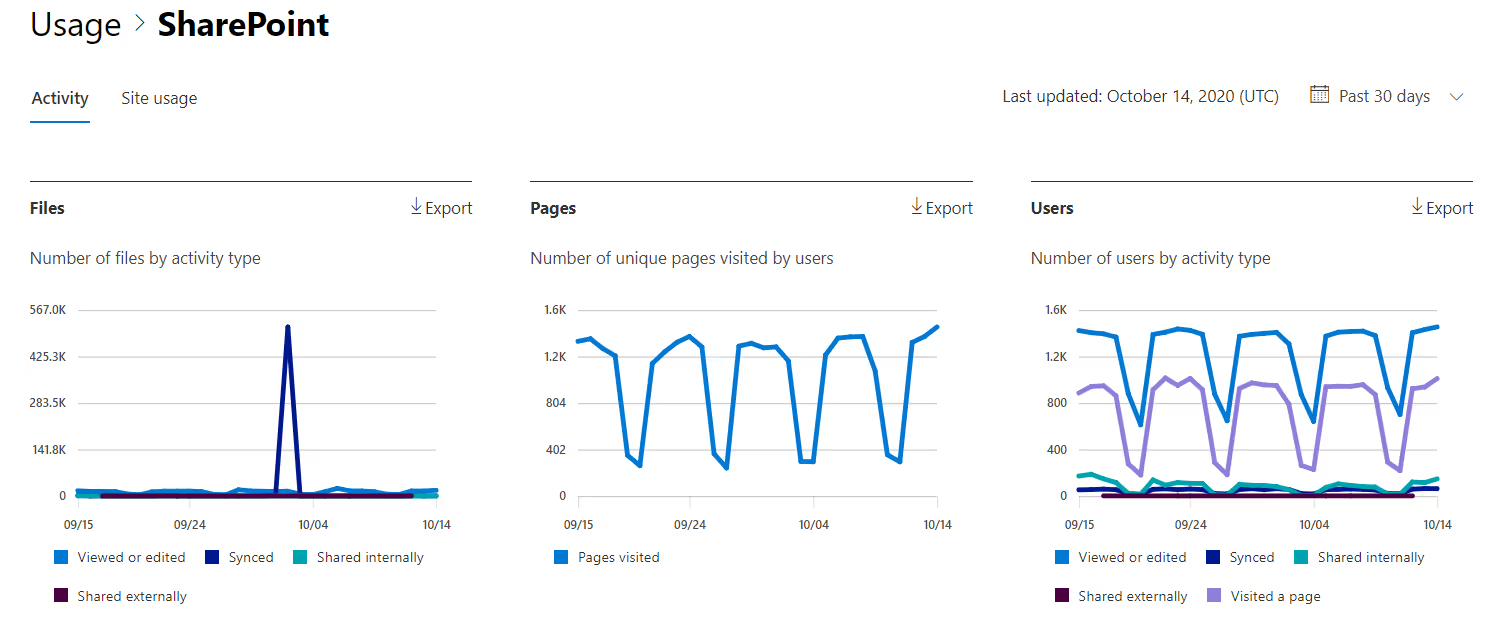
What's more, you can also track SharePoint analytics to generate reports to see how users can get the most out of it.
Level up your SharePoint user activity reporting
When you centralize your reports with ShareGate, you’ll save time by:
- Getting the insights you need
- Pinpointing issues
- Taking direct action to fix issues fast
If you’re looking for deeper, actionable insights, ShareGate’s reports are a great complement to the regular, out-of-the-box Microsoft reports.
Tracking user activity to ensure your environment remains secure and organized is crucial, and we have the reports that do the heavy lifting for you.
- Permissions matrix report: Ensure the right people have access to the right things
- External sharing report: Identify documents shared with people outside of your organization
- External user report: See a list of all external users who have access to your environments
- Sites with custom permissions report: See a list of all your sites with custom permissions
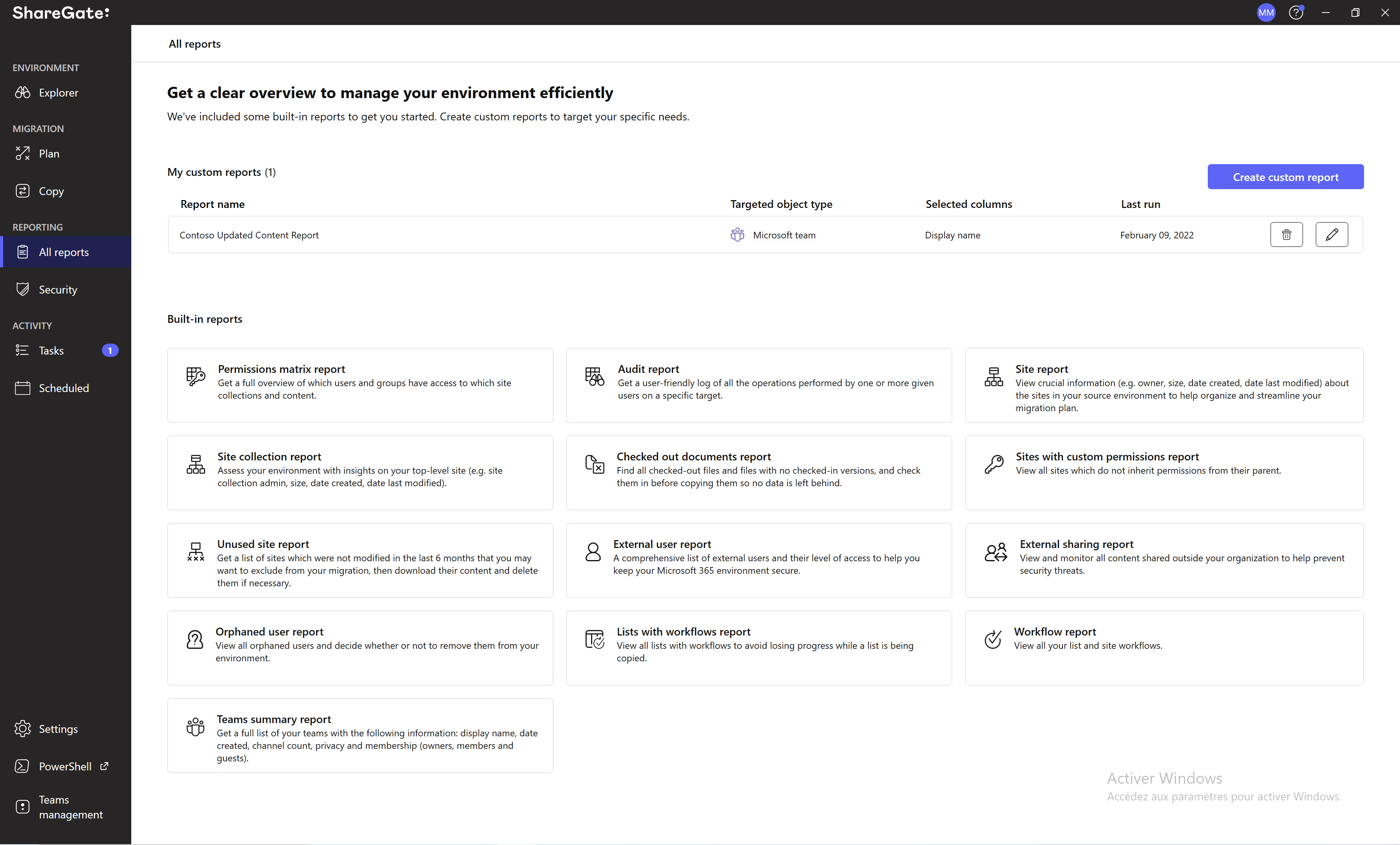
View activity logs
Should those budget spreadsheets still be shared with your organization’s former accounting firm? Who still has access to last quarter’s user research reports?
Knowing who’s taking what action on which content in your site collection can be critical in helping your SharePoint environment stay secure and organized.
SharePoint audit logs allow you to analyze the files, lists, and folders in your cloud ecosystem and see how employees are using them. They’re a great way to gain wide visibility over your SharePoint environment.
For example, if documents are going missing in the network, or being mislabeled, you can see which users are responsible.
To run an audit log search in Microsoft 365:
- Go to the Microsoft Purview compliance portal: https://compliance.microsoft.com
- In the left pane of the compliance portal, click Audit.
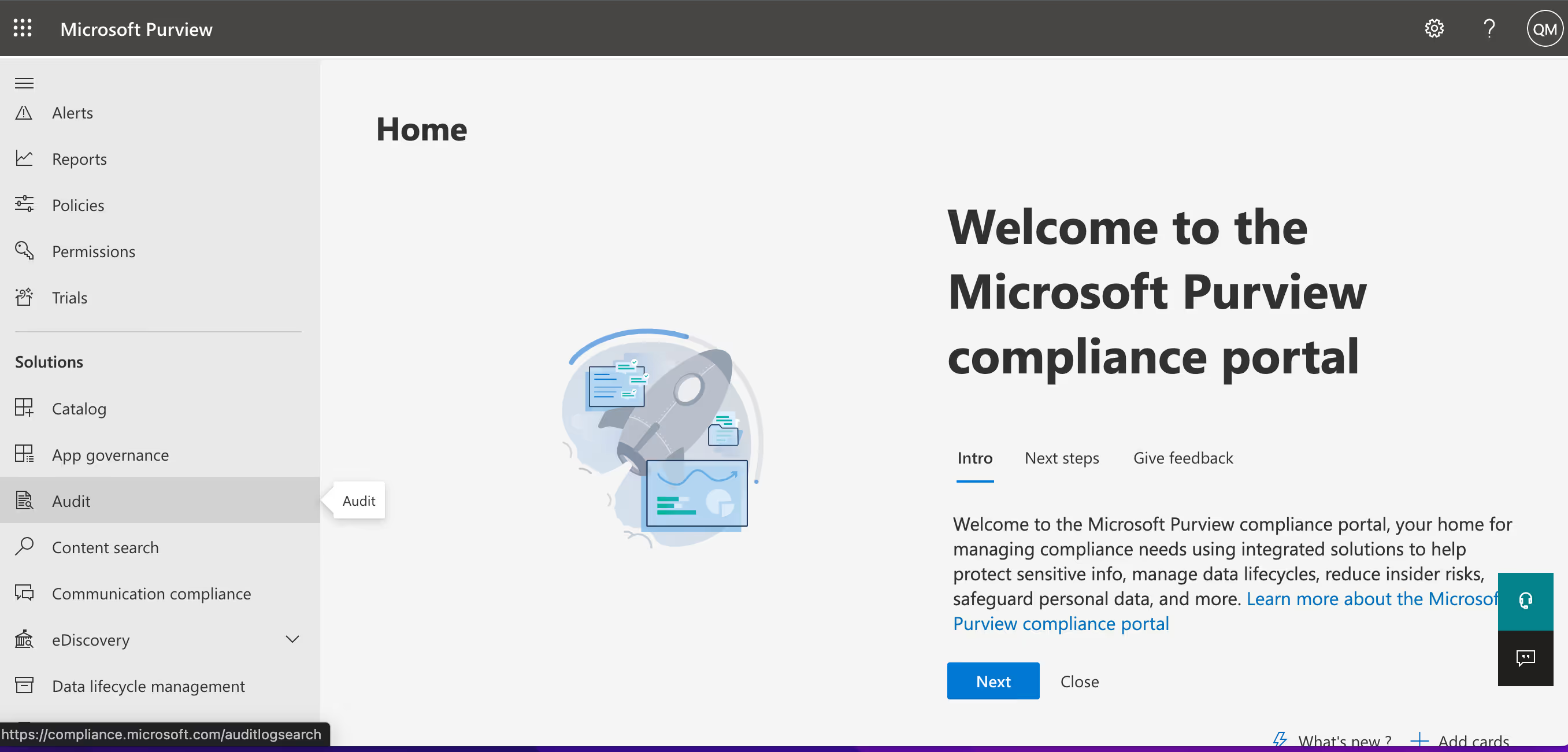
- On the Audit page, configure the search criteria to your requirements (date and time, activities, users, search name, and file, folder, or site), and run your search.
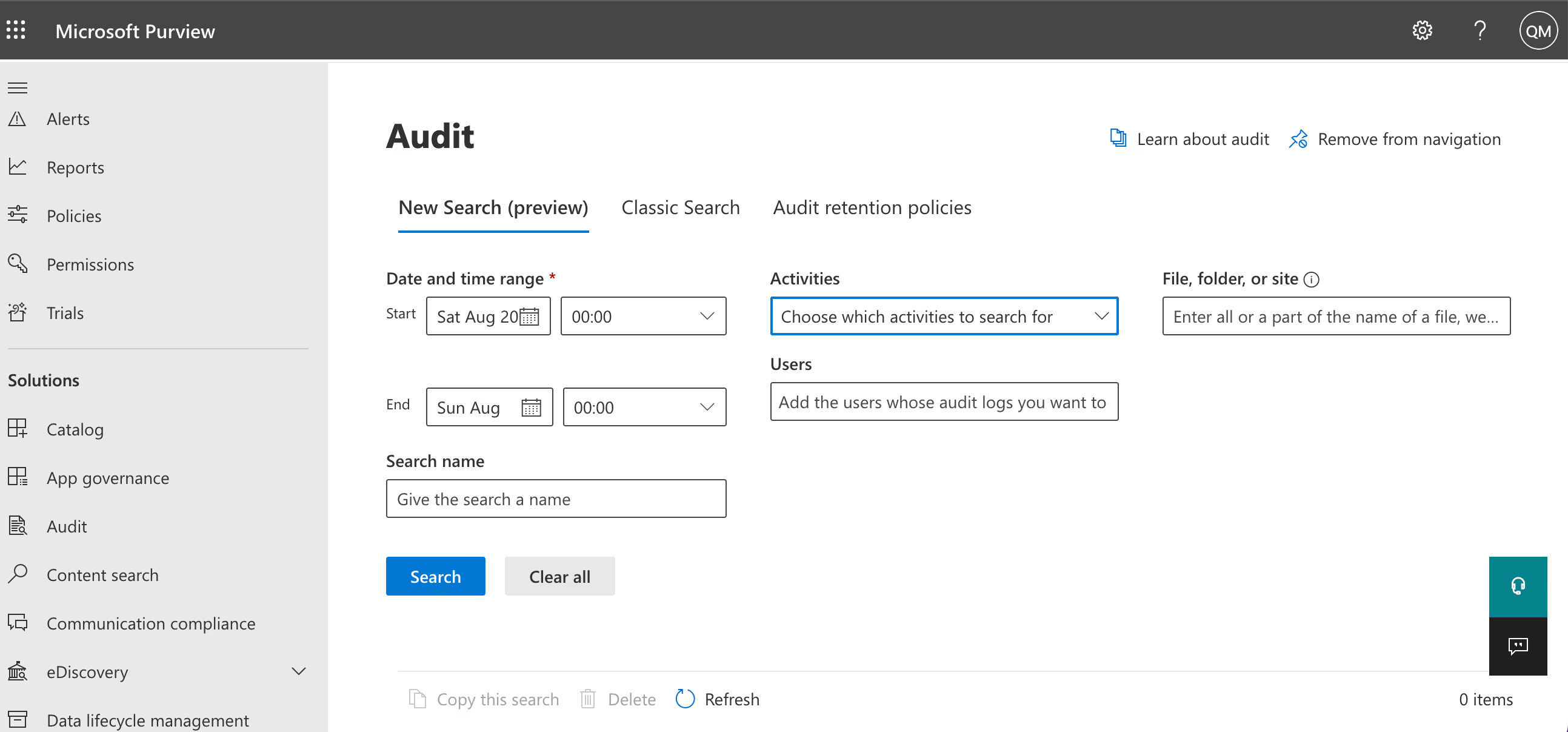
With SharePoint Online, you can audit the following activities:
- File and page activities
- Sharing and access request activities
- Site administration activities
- Directory administration activities
- Power BI activities
- Microsoft Teams Healthcare activities
- Power Automate activities
- Synchronization activities
- SharePoint list activities
- Site permissions activities
For a complete list of audited activities in SharePoint Online, check out the official Microsoft documentation.
Learn more: How Microsoft Purview protects your sensitive data
Get instant visibility
The ShareGate migration tool can crawl through your selected target to list all your site collections. You can take action on these site collections once the report is finished running.
Running a site collection report provides you with data on your selected site collection, including:
- Date created
- Last modified date
- Number of subsites
- Site owners
- Administrators
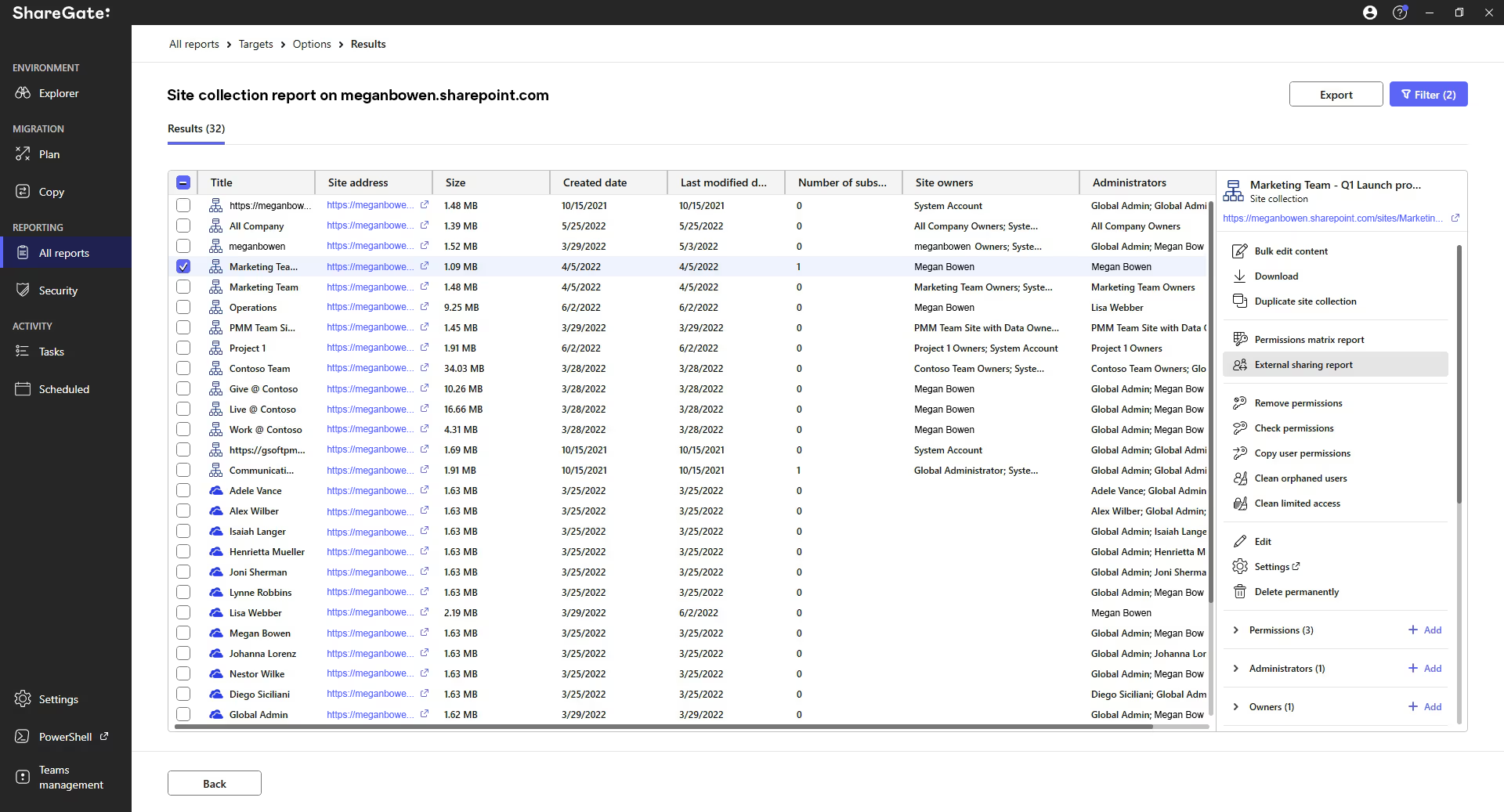
Just like that, you get everything you need to make important decisions around that site collection. It’s all part of our plan to help you focus on managing your environment in one handy tool!
Access site usage reports
Out-of-the-box SharePoint usage reports offer information to help you improve both the adoption and business impact of your SharePoint.
The reports display a number of statistics that showcase how visitors have interacted with the content on a site, whether it’s regarding ‘most viewed items’ or ‘most active users’.
To get to the SharePoint site usage report in the admin center:
- Go to the Reports > Usage page.
- From the dashboard homepage, click on the View more button on the SharePoint card.
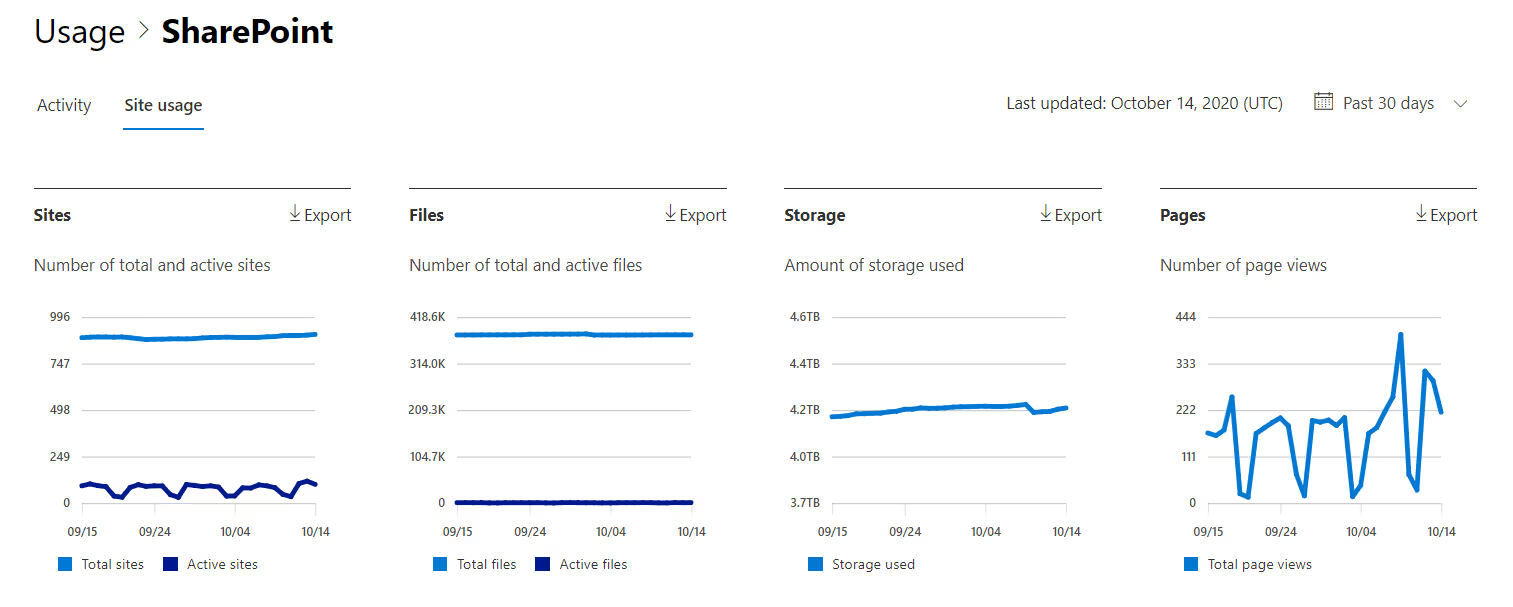
Usage reports showcase how many people are using the site, the most popular site resources, who uses the site the most, and the site entry point. Reports also include a summary of total visits, page hits, bytes downloaded, and more.
Usually taking the form of an Excel spreadsheet, usage reports can be found in the SharePoint admin center. Users are also able to chart their usage data in a graphical format, making it even easier to spot any trends, as well as identify usage patterns.
Combat sprawl and mitigate risk
ShareGate’s unused site report allows you to determine that a site is unused when it has not been modified in the past 6 months.
To determine the last modified date of a site, the ShareGate migration tool uses the latest date from the following:
- Creation date of the site
- Creation date of a list on the site
- Last modified date of an item from a list on the site
- Last date an item was deleted from a list on the site
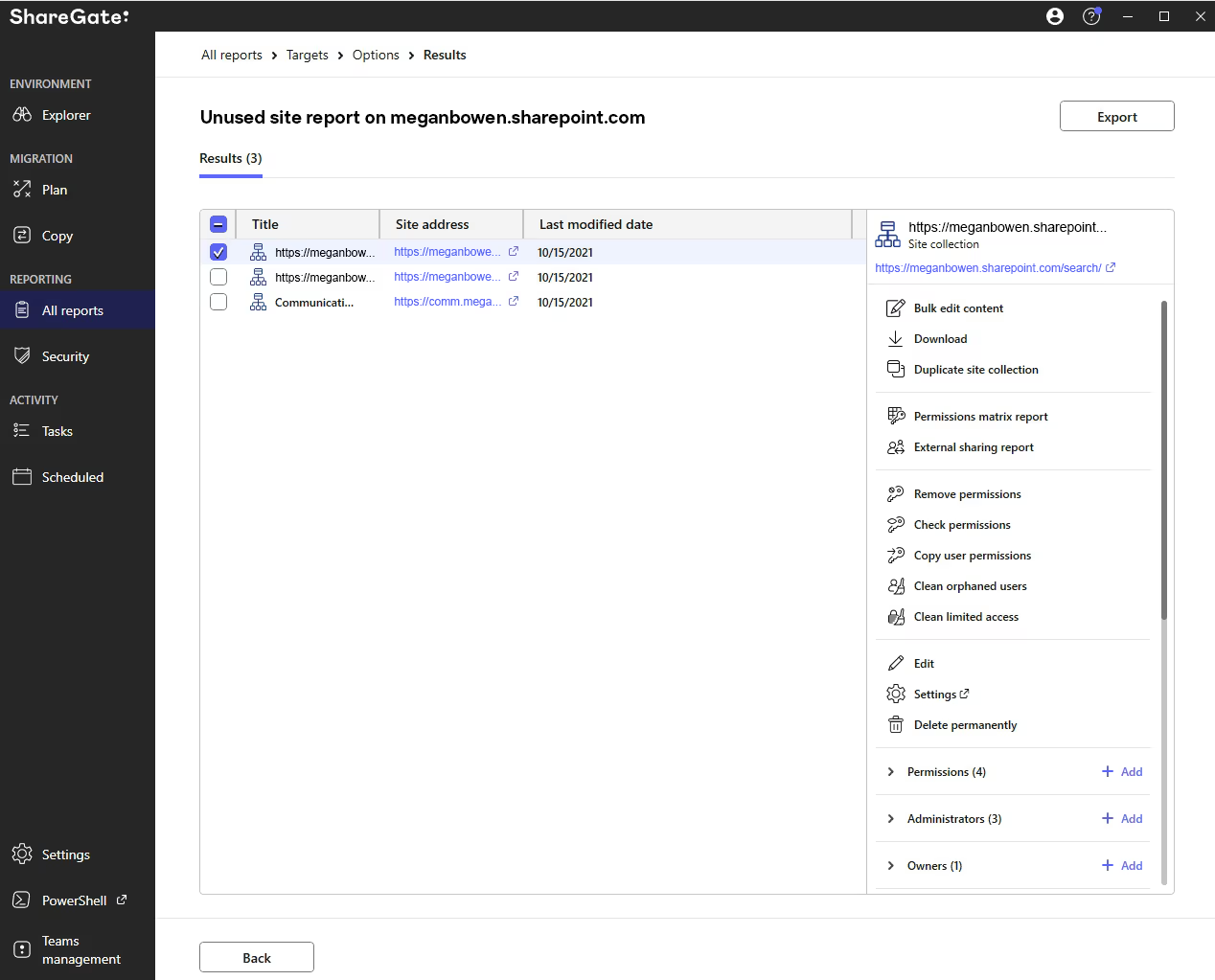
From here, you can take action to clean up your unused sites, reducing sprawl in your environment and mitigating the risk of your sensitive data falling into the wrong hands!
👉Free online course: How to secure your Microsoft 365 environment without hindering productivity.
Go from reactive to proactive
Taking a proactive approach allows you as an IT admin to understand your environment before things go sideways.
At ShareGate, we believe reporting empowers you to maintain the visibility you need to take action to find and fix issues–such as reducing sprawl and clutter, improving security and efficiency, boosting user adoption, and ensuring users are compliant with governance policies.
Want complete visibility into your SharePoint environment without having to spend time building scripts or hopping around various admin centers to get the information you need? Try out all our built-in and custom usage analytics reports with a ShareGate free trial!
.jpg)


.svg)
.avif)
%20(1).avif)












.jpg)


.png)

